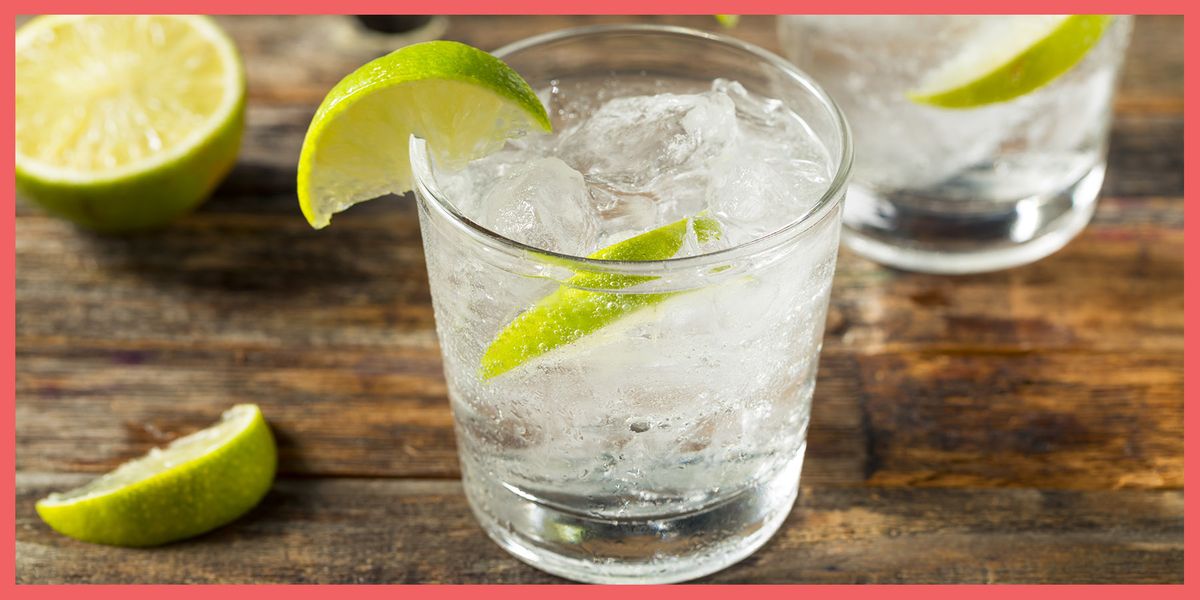
THE DARK TRUTH BEHIND THE ORIGINS OF TONIC WATER
The best cocktail mixers add a burst of bright, bubbly carbonation. Whether you're ordering a rum and Coke, a whiskey ginger, or a Champagne-topped French 75, an effervescent mixer really makes the drink pop.
Two of the most common mixers are confusingly similar: tonic water and club soda. They're both clear and carbonated, so it's easy to assume that they're interchangeable, right? But if you've ever compared a vodka tonic with a vodka soda, it's obvious that these mixers create two totally different cocktails.
For people who are just starting to explore the wide world of cocktails, however, that knowledge isn't necessarily widely understood. We know many young drinkers who tried their first gin and tonic expecting it to taste like a spiked La Croix—only to make the realization that its flavor was much stronger (and more bitter) than anticipated.
But besides the taste, what exactly is the difference between tonic water and club soda? We're breaking down the qualities that make these two beverages distinct, how they're traditionally served, and the unique histories behind them.
Tonic Water
The origins of many cocktail ingredients (like Angostura bitters and Italian amari) are rooted in medicine, and tonic water is no exception. Before the advent of modern medicine and vaccines, malaria ran rampant around the world. This parasitic infection, spread by mosquitos, is believed to be one of the most lethal diseases in human history.
But up until modern anti-malarial medicine was invented in the 1930s, there was only one known cure—and it had been used as medicine by indigenous South American communities for centuries. The cinchona tree is native to the Andean rainforest, and its bark contains an alkaloid called quinine that prevents the spread of malaria in the body.
Spanish colonizers discovered the plant's healing properties and brought it back to Europe. With such a powerful anti-malaria treatment, Europeans were better equipped to exercise imperialism and colonize regions all over the world.
By the time Britain officially seized India in 1858, colonists in South Asia had already established cinchona tree plantations and were consuming over 700 tons of the bark annually. And to make the bark's bitter taste more palatable, British industrialists in India combined it with water and sugar.
This is also around the time when bubbles came into the picture. London businessman Erasmus Bond patented an "improved aerated tonic liquid," and Schweppes came out with their own rival brand in the mid 19th century. The demand for carbonated tonic water paired with gin got so high that it became one of England's most iconic drinks. Even Winston Churchill himself said that the cocktail saved "more Englishmen’s lives, and minds, than all the doctors in the Empire.”
You can still find quinine in modern tonic water, but in significantly smaller amounts than older recipes. This bitter and sweet beverage adds a layered flavor that complements nearly any spirit. You can commonly find it served in gin and tonics, naturally, but you can also enjoy it on its own with lemon or lime.
Most tonic water brands are sweetened with corn syrup or cane sugar, but you can also find diet tonic water that uses sugar-free sweeteners.
Club Soda
The story behind club soda is also steeped in history, but isn't intrinsically tied to colonialism. Some springs can produce naturally carbonated water due to the presence of minerals, but the soda water we know and love was invented by accident in the 18th century.
Joseph Priestly suspended a bowl of water over a vat at a brewery in Leeds, England, and dripped sulphuric acid over a piece of chalk. This caused a chemical reaction that introduced carbon dioxide into the water and created bubbles. He later published a pamphlet in 1772 called "Impregnating Water with Fixed Air" to share his findings with the world.
From there, brands everywhere began making and selling their own versions of carbonated water—including Cantrell & Cochrane in Dublin, Ireland. They created club soda in 1877 as a trademarked beverage, but now its name is a generic term for any type of carbonated water.
So seltzer, club soda, and sparkling water are all essentially the same thing. Just like with tonic water, you can mix club soda with any spirit. However, unlike tonic water, there are no added flavorings or sweeteners.
2023-05-19T19:39:53Z dg43tfdfdgfd